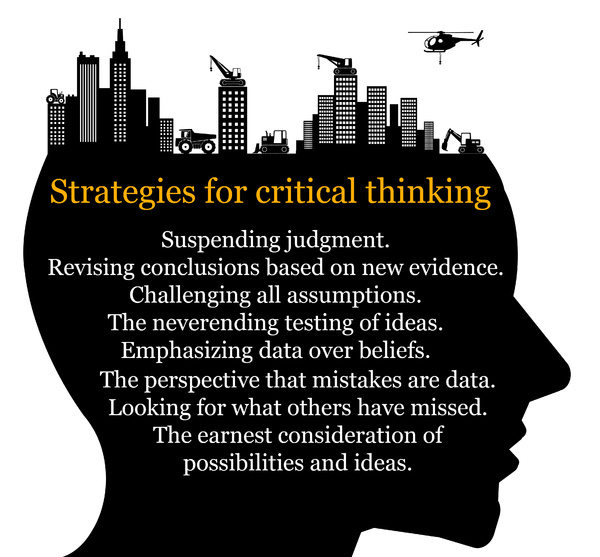THE WORLD’S #1 EXECUTIVE COACHING AND BUSINESS COACHING BLOG SINCE 2017.
Impatience: Why It’s a Leader’s Biggest Downfall
December 13, 2024 | Category: Blog, Intelligent Leadership | Last updated on: March 12, 2025
Impatience defeats critical thinking and optimal decision-making. Leaders who “get things done” may seem like decisive, assertive leaders, but if impatience is their driver, they are likely aggressive rather than assertive. Aggression breeds resentment, disengagement, and high employee turnover.
Impatience is an indispensable component of human nature, but it is a controversial trait. Some, like Xerox’s Ursula Burns, may call it a virtue under certain circumstances. Others see it as the bane of wise people, causing them to do foolish things.
From the perspective of leadership coaching and intelligent leadership, impatience is an attempt to force life to deliver answers. People trying to wring answers out of life instead of allowing them to unfold at their own pace find that impatience is a weakness.

The Pitfalls of Impatience in Leadership
In leadership, impatience often stands out as a leader’s greatest weakness. It undermines personal growth and the stability of the entire organization. Impatience emerges when leaders prioritize quick results at the expense of thoughtful, strategic decision-making.
The job of a leader is not just to achieve short-term results but to foster a sustainable, high-trust environment that enables lasting success. With the ability to stay focused on the long term, leaders can avoid making hasty choices and damaging team morale.
Leaders who dedicate themselves to the inner work of self-awareness and self-discipline can avoid the pitfalls of impatience, making even situations like job interview opportunities to demonstrate foresight and balance.
Understanding Impatience in Leadership
What is Impatience?
Impatience often appears when a leader feels compelled to push for immediate results, regardless of potential long-term consequences.
While driven by a desire for progress, impatience often clouds judgment and disrupts the path to sustainable leadership success.
According to the Intelligent Leadership model, this tendency is often rooted in a leader’s lack of inner-core strength—character, resilience, and emotional maturity—which affects their outer-core effectiveness.
Even in a job interview, impatience can manifest when a leader feels compelled to make an instant impression rather than presenting a thoughtful and strategic perspective. Leaders and hiring managers should understand that true leadership impact is built over time and that impatience can hinder influence and credibility.
Impatience is a signal to pause and recalibrate. Leaders who recognize this can channel their energy into cultivating emotional discipline, allowing them to make better decisions and foster trust. When patience aligns with vision and strategy, it becomes a powerful force for achieving meaningful and lasting impact.
Why is Impatience Common Among Leaders?
Many leaders feel impatient due to the relentless pressure to deliver fast results, often prioritizing speed over thoughtful, long-term impact.
Instant gratification is a plague of modern society. In our quest to satisfy our desires as quickly as possible, we have grown to appreciate those who “get things done.”
Sometimes, patience may come across as dithering in the context of leadership. Leaders who “make things happen” exude strength and charisma. Such doers are often organizational drivers who finish projects and push others to complete them.
Highly driven leaders are result-oriented, ambitious, and eager to swing into action. If impatience is the source of these leadership virtues, what’s wrong with it?
This impatience can quickly become their greatest weakness, undermining their ability to lead with strategy and foresight. Here are some of the key factors that drive impatience in leadership:
- High-Pressure Environments: Leaders frequently feel impatient in high-stakes situations where quick decisions are expected, emphasizing instant gratification over calculated planning.
- Emphasis on Rapid Achievement: Many leaders assume their job requires nonstop progress, which may encourage them to pursue immediate wins rather than sustainable outcomes.
- Time Constraints: Limited time can make leaders impatient, causing them to rush decisions without consideration.
Leaders can recognize impatience as a possible weakness and focus on cultivating patience, balance, and a more strategic perspective.
Impatient vs. Assertive Leaders
Impatient leaders don’t have a monopoly on “getting things done.”
Intelligent leaders who control their impatience complete items by being assertive. Impatient leaders, on the other hand, allow their weaknesses to make them aggressive.
The differences between aggressiveness and assertiveness set good leaders apart from those for whom no one wants to work.
Unlike aggressive communication, an assertive leadership style is firm, respectful, and straightforward. Assertive leaders find it easier to:
- Build meaningful relationships predicated on trust and mutual respect
- Resolve conflicts quickly and effectively
- Escape common traps of leadership like anxiety, loneliness, and helplessness
- Build their self-esteem
- Make requests and express their wants and needs confidently
Aggressive Communication Sabotages Leadership
Aggressive communication is self-centered. An aggressive leader goes into a meeting with an agenda and will push that agenda regardless of how other participants feel about it. The difference between assertive and aggressive leaders is that the latter don’t care about other viewpoints and won’t bother to show respect.
Aggressive communication begets adverse reactions. The stakeholders whom the aggressive leader dominates respond with passive aggression, resentment, and anger.
Seeking genuine feedback from such parties may be futile. Since the communication is one-way only, there’s no trust, and a lack of trust translates to insincere feedback, disengagement, dissatisfaction, high employee turnover, and (in extreme cases) litigation.
Compliance is seldom a problem for aggressive leaders, but it comes at a steep price.
The role of a leader is to motivate, empower, and engage employees. You can’t achieve any of these objectives through aggression.
| Assertive Leaders | Impatient Leaders |
| Focus on long-term strategy | Seek immediate gratification |
| Communicate with respect and clarity | Communicate with aggression |
| Build trust and empower teams | Create disengagement and resentment |
The Dangers of Hasty Decisions
Executive coaching understands the importance of critical thinking in decision-making. Deliberation may seem like dithering and indecision, but the best leaders know that hasty decisions are never optimal, barring an emergency.
Critical thinking takes time. Decisions born out of impatience are impulsive and emotion-based.
Critical thinking requires leaders to:
- Ask questions and gather relevant information
- Analyze information from diverse perspectives
- Consider several conclusions and solutions and weigh them carefully
- Explore alternative solutions and methods of addressing problems
- Communicate effectively and clearly throughout the process
Critical thinking is incompatible with impatience.
Critical thinkers are ready to reconsider their interpretations of situations based on new data, analyses, and discoveries.
They consciously try to separate personal opinions from what they perceive as facts. Impatience is incompatible with critical thinking and optimal decision-making.
Executive coaching can help leaders recognize their impatience triggers and assess how impatience impairs their leadership. Leaders can exert control over their thinking by identifying the thoughts impatience triggers in their minds.
Consequences of Impatience on Team Dynamics
Impatience can negatively impact team dynamics and work culture, often creating a stressful and uncertain environment. A leader’s impatience can lead to frustration within the team, lower morale, and hinder work performance.
Leaders who lack the patience to guide their teams thoughtfully risk weakening trust and engagement. Here are some key ways impatience affects team culture:
- Creates High-Stress Levels: An impatient leader may demand rapid results, creating a high-stress environment and causing employees to feel overwhelmed, ultimately affecting their work performance.
- Reduces Team Cohesion: Impatient leaders often fail to communicate effectively, leading to misunderstandings and a lack of clarity. This approach can weaken team cohesion and result in inconsistent performance.
- Undermines Employee Confidence: When leaders prioritize quick results over constructive support, employees may feel undervalued and discouraged from taking the initiative. This dynamic affects job satisfaction and long-term motivation.
- Inhibits Growth and Development: A culture of impatience often lacks the support needed for employee development, leaving little room for constructive feedback and growth.
By recognizing impatience as one of their greatest weaknesses, leaders can work to transform their approach, cultivating a patient mindset that nurtures team engagement and stability.
The Mindset of a Patient, Strategic Leader
The Power of Deliberate, Thoughtful Leadership
Effective leaders understand the power of patience and deliberation, recognizing that thoughtful leadership nurtures a supportive, resilient work culture.
Patient leaders stay focused on sustainable growth, balancing their inner core (character, values) and outer core (skills, behavior) to foster enduring success. A leader’s patience exemplifies strength and discipline in a high-pressure job, inspiring team confidence.
A patient leader’s mindset shines through even in a job interview. Rather than focusing solely on immediate impact, they convey a long-term vision and balanced thinking.
A leader who can demonstrate patience and self-awareness in demanding situations signals stability, wisdom, and a commitment to quality.
Leaders prioritizing these principles leave a legacy of reliability, showing that each decision reflects careful consideration rather than instant gratification, thus avoiding their most significant weaknesses.
Practical Steps to Becoming a More Patient Leader
Developing Self-Awareness and Self-Criticism
Patience in leadership begins with self-awareness and a willingness to be self-critical. In my work, I emphasize that leaders must consciously examine their behaviors honestly and understand that impatience can sometimes be their greatest weakness.
Self-assessment helps leaders recognize when their need for instant gratification may affect their team’s morale and productivity. It also helps leaders identify areas for improvement and thoughtfully address their weaknesses. Being more detail-oriented in these situations improves focus and helps leaders avoid impulsive decisions.
Learning to Delegate and Build Trust in Teams
A key step toward becoming a more patient leader is building trust within the team and learning to delegate tasks effectively. My Intelligent Leadership model highlights that leaders who delegate value each team member’s contributions, fostering patience and empowerment.
Here are some ways that delegation helps leaders practice patience and improve in their jobs:
- Reduces Personal Workload: By delegating tasks, leaders can focus on higher-level strategic decisions, allowing them to stay focused on long-term goals rather than being consumed by the immediate demands of the job.
- Builds Team Confidence: Delegating tasks empowers team members to take ownership, which helps build their confidence and strengthens trust between the leader and team.
- Encourages Collaborative Growth: When leaders delegate, they create opportunities for the team to collaborate, fostering a supportive environment that thrives on shared goals.
- Allows Time for Reflection: Delegation gives leaders time to reflect on their decisions rather than rushing, helping them approach challenges with a balanced, thoughtful mindset.
Effective delegation enables leaders to avoid the pitfalls of impatience, allowing them to lead with a focus on trust and collective success.
Role of Executive Coaching in Developing Patience as a Leadership Skill
How Coaching Encourages Self-Reflection and Growth
Executive coaching supports leaders in addressing their greatest weakness, providing tools for self-reflection and growth that strengthen their inner and outer cores.
In executive coaching, I work with leaders to uncover areas where they may feel impatient or overly self-critical, helping them learn from feedback. This reflective approach allows leaders to consciously develop patience, emotional resilience, and clarity of purpose.
Here’s how coaching helps leaders improve:
- Enhances Self-Awareness: Coaching encourages leaders to evaluate themselves constructively. Leaders who actively reflect on their weaknesses can turn these areas into strengths, promoting long-term resilience.
- Refines Communication Skills: In public speaking or one-on-one conversations, leaders gain confidence by identifying and improving their weak points.
- Builds Strategic Focus: Coaching guides leaders to stay focused on strategic goals, reducing the tendency to make impulsive decisions. Leaders learn to avoid instant gratification, focusing instead on sustainable impact.
- Fosters Emotional Resilience: Leaders become more emotionally resilient by acknowledging and addressing their weaknesses and learning to handle pressure calmly and effectively.
Coaching Tools for Patience and Self-Improvement
Effective coaching offers a range of tools designed to develop patience and emotional resilience in leaders. Through executive coaching, I help leaders make deliberate, incremental improvements that transform impatience into a disciplined approach to leadership.
Leaders who consciously work on these skills become a better version of themselves, equipped to handle challenges with greater wisdom.
Some coaching tools that foster patience include:
- Self-Assessment: Leaders are encouraged to self-assess, evaluating their weaknesses and identifying areas for growth. This self-assessment builds a foundation of self-awareness.
- Strategic Delegation: Coaching guides leaders in refining their organizational skills and learning to trust others’ capabilities. This trust-building helps leaders avoid burnout and stay focused on long-term goals.
- Hiring Manager Insights: Coaching often involves helping leaders who serve as hiring managers recognize the value of patience when evaluating potential candidates. Leaders who are patient in their hiring process tend to choose candidates with values that align with the organization.
- Focused Improvement on Weak Points: Leaders identify and work on their most significant weaknesses, such as being overly reactive or lacking clarity in high-stress situations.
By integrating these tools, leaders grow in self-awareness, patience, and emotional resilience, ultimately enhancing their work performance and team dynamics.
The Benefits of Patience in Leadership and Organizational Growth
Reduced Stress and Improved Work Performance
Patience in leadership provides a foundation for reduced stress and improved work performance, creating an environment that supports growth for the entire team. Leaders who remain self-aware in high-stakes situations demonstrate emotional resilience, a cornerstone of Intelligent Leadership.
Patient leaders set a powerful example, helping reduce the pressure from rushed decision-making. If they actively work on overcoming their greatest weakness, they encourage others to face their challenges, fostering a steady, confident growth culture.
Building a Legacy of Trust, Resilience, and Sustainable Success
A patient leader builds a lasting legacy through trust, resilience, and a commitment to sustainable success.
They embrace patience, project stability, and thoughtfulness, inspiring confidence in their team. Leaders who focus on patience and address their own most significant weaknesses create a foundation of trust and resilience. This trust becomes a valuable legacy, fostering a culture that embodies Intelligent Leadership.
Patient, self-aware leaders leave behind more than immediate results; they create a workplace where individuals are empowered to grow and succeed together.
Conclusion
In leadership, patience is not just a virtue—it’s a powerful asset that enables sustainable growth and success. Leaders who cultivate patience are better equipped to manage their most significant weaknesses, strengthening their resilience and the team’s performance. In my Intelligent Leadership framework, I teach that true impact is achieved when leaders develop their inner core, becoming self-aware and grounded in their values.
Leaders who demonstrate patience foster trust, stability, and long-term loyalty. Patience transforms impulsive actions into intentional, meaningful decisions, creating an environment where each person can contribute fully and flourish.
As leaders embrace patience and commit to Intelligent Leadership, they don’t just improve their work performance—they build a lasting legacy of purpose, resilience, and trust that benefits the organization and every individual within it.
Learn more about what Intelligent Leadership executive coaching can do for you and your organization.




